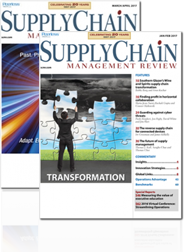
By Mike Doherty ·
March 4, 2024
The first CPFR pilot started in 1996 when Walmart collaborated with Warner-Lambert, focusing on the Listerine category of products. In conducting the pilot, Walmart and Warner-Lambert independently calculated the demand they expected for a period of six months into the future. They exchanged forecast numbers over the Internet, using special software. If the numbers were different, they used the link to exchange more data and eventually converged on a single forecast.
The pilot proved to be very successful, helping to confirm the potential promise of improved collaboration. Listerine sales went up, in-stocks were much higher, fill rates were at acceptable levels, and ecosystem inventories were reduced.
While this early pilot helped cement the benefits of collaboration, over the next several years and decades, CPFR failed to scale and realize its potential despite several success stories. This was largely because of two issues that plagued the approach.
First, in the model, both the retailer and the supplier were deriving an independent forecast of essentially supplier orders. That often resulted in a large discrepancy between each entity’s forecast. Then, as a result, considerable time and effort were required from both entities to reconcile the differences, reforecast, collaborate again, and eventually come to a consensus on a shared forecast of supplier orders.

By Mike Doherty ·
March 4, 2024
The first CPFR pilot started in 1996 when Walmart collaborated with Warner-Lambert, focusing on the Listerine category of products. In conducting the pilot, Walmart and Warner-Lambert independently calculated the demand they expected for a period of six months into the future. They exchanged forecast numbers over the Internet, using special software. If the numbers were different, they used the link to exchange more data and eventually converged on a single forecast.
The pilot proved to be very successful, helping to confirm the potential promise of improved collaboration. Listerine sales went up, in-stocks were much higher, fill rates were at acceptable levels, and ecosystem inventories were reduced.
While this early pilot helped cement the benefits of collaboration, over the next several years and decades, CPFR failed to scale and realize its potential despite several success stories. This was largely because of two issues that plagued the approach.
First, in the model, both the retailer and the supplier were deriving an independent forecast of essentially supplier orders. That often resulted in a large discrepancy between each entity’s forecast. Then, as a result, considerable time and effort were required from both entities to reconcile the differences, reforecast, collaborate again, and eventually come to a consensus on a shared forecast of supplier orders.

March 4, 2024

Subscribe to Supply Chain Management Review Magazine!
Subscribe today. Don’t Miss Out!
Get in-depth coverage from industry experts with proven techniques for cutting supply chain costs and case studies in supply chain best practices.
Start Your Subscription Today!

